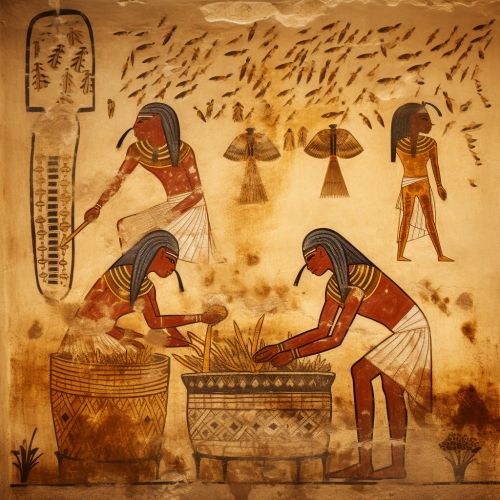Apiculture
Introduction
Apiculture, also known as Beekeeping, is the practice of maintaining bee colonies, usually in man-made hives, by humans. This practice is done for the production of honey, beeswax, and other by-products. Apiculture also aids in pollination of nearby crops, a crucial aspect of modern agriculture.
History
Apiculture has a long and storied history, dating back to ancient times. The earliest evidence of honey collection comes from rock paintings in Spain, which are estimated to be more than 8000 years old. The practice of beekeeping was refined in ancient Egypt, where honey was used not only as a food source, but also for medicinal and religious purposes. The Egyptians also developed early forms of hives and beekeeping tools.


Bee Species
There are several species of bees that are commonly kept in apiculture. The most common is the Apis mellifera, which is native to Europe but has been introduced worldwide. Other species include the Eastern honey bee (Apis cerana), the African honey bee (Apis mellifera scutellata), and the Italian bee (Apis mellifera ligustica).
Beekeeping Equipment
Beekeeping requires specialized equipment to handle bees and their products safely and efficiently. This includes the beehive, which houses the bee colony, the smoker, which is used to calm the bees, and the bee suit, which protects the beekeeper from stings. Other tools include the hive tool, used for opening hives and manipulating hive components, and the honey extractor, which extracts honey from the honeycombs.
Beekeeping Practices
Beekeeping practices vary widely around the world, depending on the species of bee and the local environment. However, most practices involve the same basic principles. These include the selection of a suitable site for the beehive, the installation of a bee colony into the hive, the regular inspection and maintenance of the hive, and the harvesting of honey and other products.
Challenges in Apiculture
Apiculture faces several challenges, including diseases and pests, such as the Varroa mite, and environmental factors, such as pesticide exposure and habitat loss. Climate change also poses a significant threat to beekeeping, as changes in temperature and precipitation patterns can affect the availability of nectar and pollen, the primary food sources for bees.
Economic Impact
Apiculture has a significant economic impact, both through the direct sale of honey and other bee products, and through the role of bees in pollination. It is estimated that bees contribute billions of dollars to the global economy each year, through both their direct and indirect contributions to agriculture.
Environmental Impact
Bees play a crucial role in the environment by pollinating a wide variety of plants, including many agricultural crops. Without bees, many of these plants would not be able to reproduce, which would have serious implications for global food security. However, bee populations are declining in many parts of the world, due in part to the challenges facing apiculture.
Future of Apiculture
The future of apiculture depends on addressing the challenges facing bees and beekeepers. This includes finding ways to combat diseases and pests, reduce the impact of pesticides, and mitigate the effects of climate change. There is also a need for more research into bee biology and behavior, to improve our understanding of these fascinating creatures and how best to care for them.
